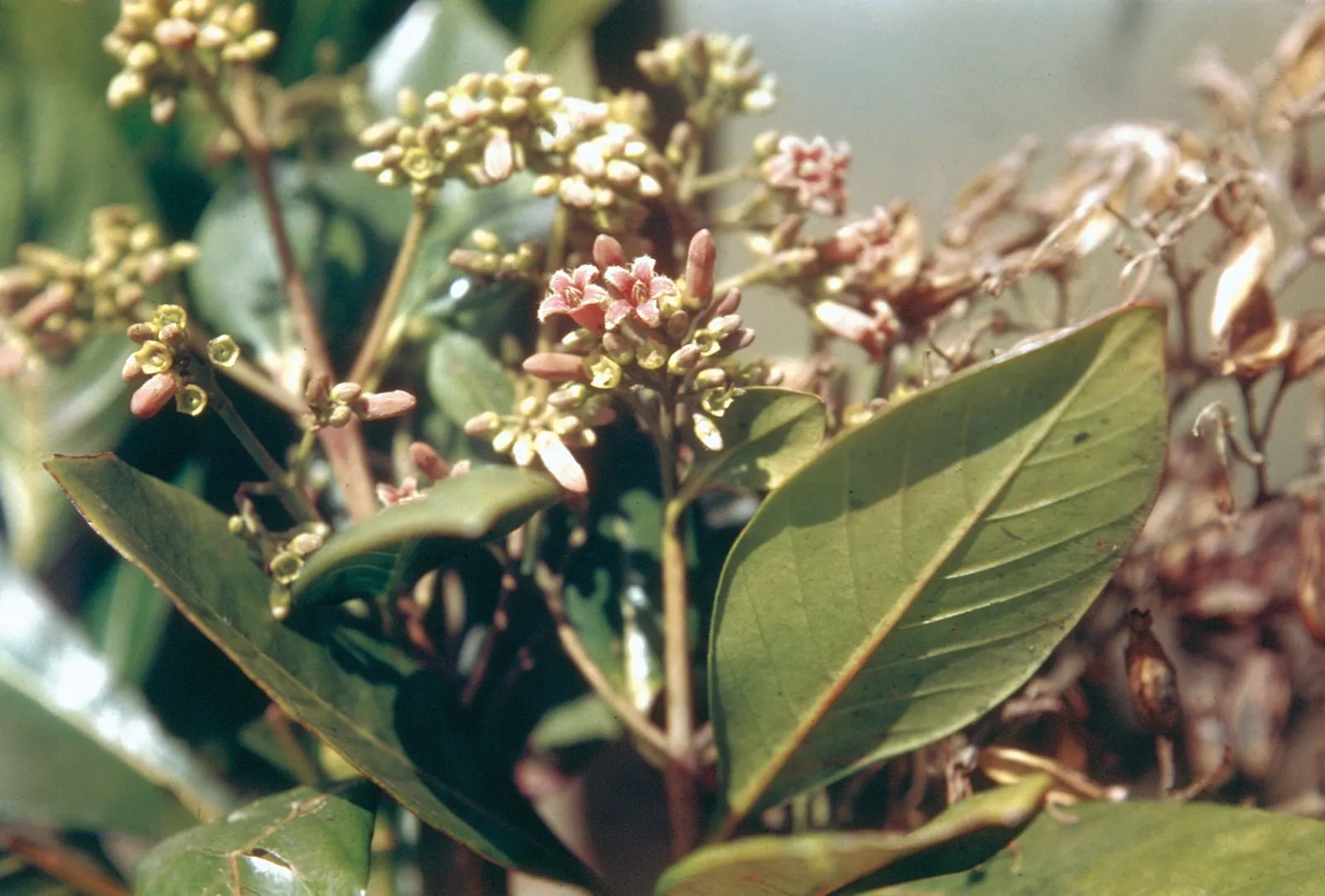Family: Rubiaceae
Genus: Cinchona
Species: officinalis, ledgeriana, succirubra, calisaya
Synonyms: Quinaquina officinalis, Quinaquina lancifolia, Quinaquina coccinea
Common Names: Quinine bark, Quina, Kinakina, China Bark, Jesuit’s Bark, Peruvian Bark, Calisaya Bark, Fever Tree
Introduction:
Cinchona is a genus of about 38 species of flowering plants in the Rubiaceae family, native to the tropical regions of South America. Known for their powerful medicinal properties, especially against malaria, these plants were a lifeline for indigenous communities and colonial explorers alike.
Description:
Cinchona plants are evergreen shrubs or small trees that grow 5–15 meters tall. The leaves are opposite, oval to lance-shaped, and measure 10–40 cm long. The flowers are fragrant and appear in terminal clusters, ranging in color from white to pink and red. The fruit is a small capsule containing numerous tiny seeds.
The medicinally valuable bark contains a rich array of alkaloids, including quinine — a well-known antimalarial compound — and quinidine, used for treating irregular heartbeats. The bark is traditionally stripped, dried, and powdered for medicinal use.
Historical Background:
The name Cinchona is believed to honor the Countess of Chinchón, the wife of a Spanish viceroy in Peru, who was reportedly cured of a fever with a bark extract. Jesuit missionaries later introduced this remedy to Europe in the 17th century, using it against malarial fevers.
Initially, some skepticism surrounded its effectiveness since not all Cinchona species had equally potent bark. But by the early 19th century, its reputation as a reliable malaria treatment was firmly established. Synthetic alternatives like chloroquine were introduced in the 20th century, but natural quinine made a resurgence after resistant malarial strains appeared.
Chemical Constituents:
The bark contains up to 15% alkaloids, primarily:
-
Quinoline Alkaloids: Quinine, Quinidine
-
Indole Alkaloids: Cinchonamine
-
Other Compounds: Tannins, Quinovin (a bitter triterpenic glycoside), Quinic acid
These alkaloids give the bark its characteristic bitterness and therapeutic potency.
Therapeutic Uses:
Cinchona is traditionally valued for a wide range of medicinal properties:
-
Antimalarial: The primary historic use, quinine interferes with malaria parasite reproduction.
-
Digestive Stimulant: As a bitter tonic, it enhances appetite and digestive secretions.
-
Antiparasitic & Amebicide: Effective against intestinal parasites and protozoa.
-
Febrifuge: Reduces fevers, especially those associated with malaria.
-
Antispasmodic: Relieves muscle cramps, including nocturnal leg cramps.
-
Antiarrhythmic: Quinidine stabilizes heart rhythm.
-
Antiseptic, Antibacterial, Antifungal: Prevents and treats various infections.
-
Analgesic: Alleviates pain.
-
Nervine: Calms nervous disorders.
-
Astringent: Useful for oral infections, sore throats, and digestive issues.
Traditional and Contemporary Applications:
In indigenous medicine and Ayurveda, Cinchona bark has been used for:
-
Treating sciatica, dysentery, arthritis, and muscle cramps
-
Reducing nerve pain
-
As a digestive aid and fever reducer
-
In oral care as a gargle for throat infections
-
As an insecticide and general antimicrobial remedy
Although synthetic antimalarials are now commonly used, Cinchona and its extracts remain valuable in areas with drug-resistant malaria and as an ingredient in traditional tonics and bitters.
Speech Disorder
A speech disorder, also known as a speech impairment...
ADHD
Attention-deficit / hyperactivity disorder (ADHD) is a...
Cerebral Palsy(CP)
Cerebral palsy (CP) is a group of neurological disorders...
Cancer
Cancer is a broad term for diseases where cells...




